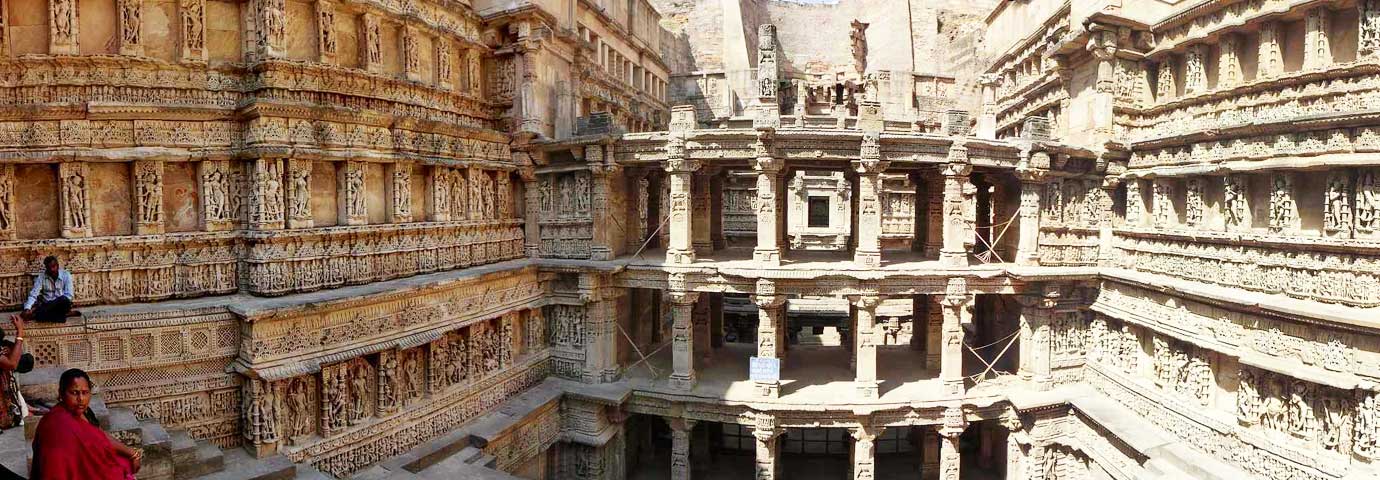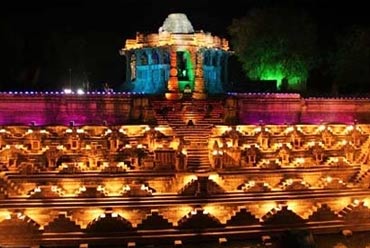Ran Ki Vav is the grandest step well of Gujarat. The unique well with its heritage of architectural grandeur is located in the sleepy town of Patan. This well was fed by the waters of the Saraswati River and dried up when water became scarce. Constructed by Queen Udayamati (AD 1022-63) in the loving memory of her husband King Bhimdev I of Solanki dynasty, this spectacular piece of architecture is an UNESCO World Heritage Site. The reminiscence of the former glory is witnessed in the intricate architecture and carvings of the expert craftsmen.
Rani-ki-Vav was built at the height of craftsmen’s ability in step well construction. The intricate Maru-Gurjara architectural style reflects rare beauty. The step wells of Gujarat were not just constructions to collect water. These monuments were for the village people to socialize with each other. These wells also held a great spiritual significance. The grand step well is designed as an inverted temple highlighting the sanctity of water. The waters are divided into seven levels of stairs with high artistic quality sculptures. The well is located at the westernmost end of the property. The water source consists of a shaft 10 m in diameter and 30 m deep. The waters were surrounded by Ayurvedic plants and herbs which added to the waters aid from various diseases.
Ran Ki Vav step well has more than 500 principle sculptures and over a thousand minor ones on the walls, pillars and beams. They combine religious, mythological and secular imagery, often referencing literary works sculpted intricately. The carvings with the central of Dasavataras or ten incarnations of Lord Vishnu, including Buddha reflect the splendid architectural skills of the artisans of the Solanki dynasty. The avatars of Vishnu are accompanied by sadhus, Brahmins and asparas or celestial dancers. Do not miss the carved image of Sheshashayi-Vishnu, the reclining image of Lord Vishnu on the thousand hooded Sheshnaga. Many treasures of Ran Ki Vav are lost with the ravages of time.



